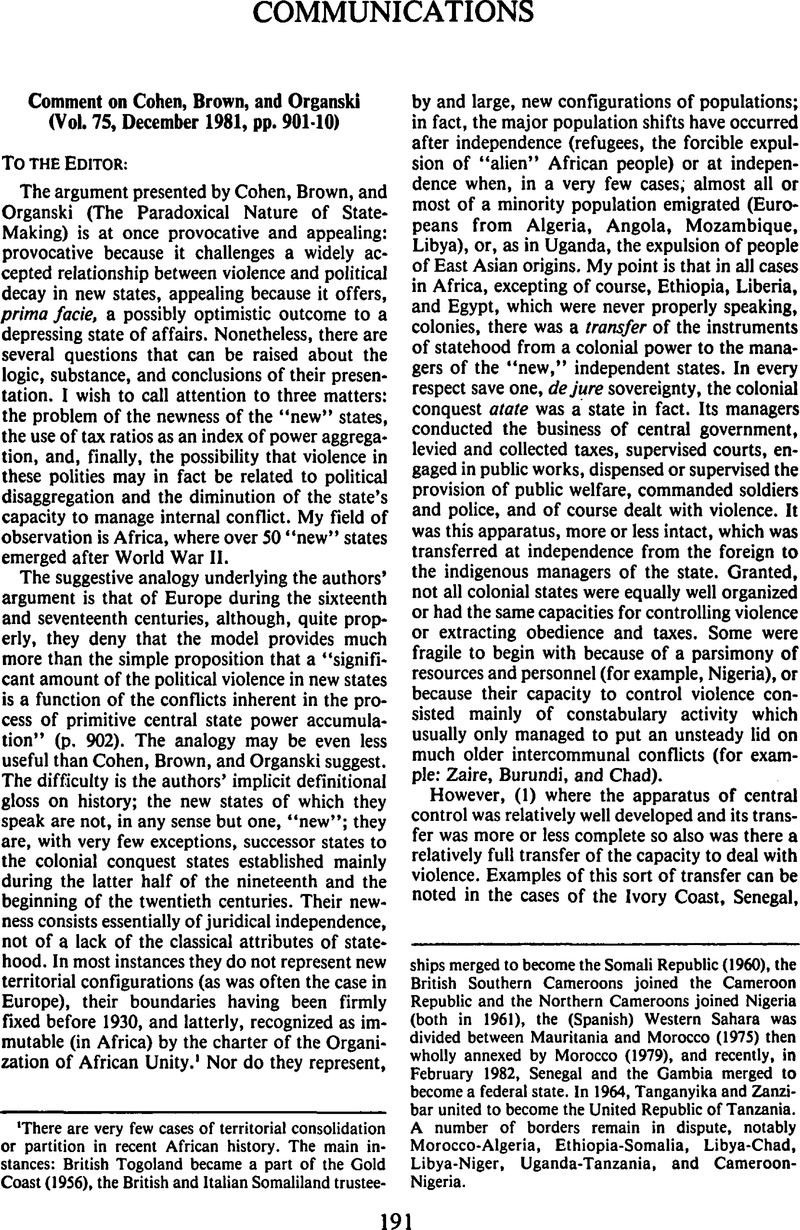Published online by Cambridge University Press: 01 August 2014

1There are very few cases of territorial consolidation or partition in recent African history. The main instances: British Togoland became a part of the Gold Coast (1956), the British and Italian Somaliland trusteeships merged to become the Somali Republic (1960), the British Southern Cameroons joined the Cameroon Republic and the Northern Cameroons joined Nigeria (both in 1961), the (Spanish) Western Sahara was divided between Mauritania and Morocco (1975) then wholly annexed by Morocco (1979), and recently, in February 1982, Senegal and the Gambia merged to become a federal state. In 1964, Tanganyika and Zanzibar united to become the United Republic of Tanzania. A number of borders remain in dispute, notably Morocco-Algeria, Ethiopia-Somalia, Libya-Chad, Libya-Niger, Uganda-Tanzania, and Cameroon-Nigeria.
Comments
No Comments have been published for this article.